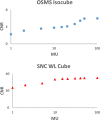Portal dosimetry scripting application programming interface (PDSAPI) for Winston-Lutz test employing ceramic balls
- PMID: 33098369
- PMCID: PMC7700922
- DOI: 10.1002/acm2.13043
Portal dosimetry scripting application programming interface (PDSAPI) for Winston-Lutz test employing ceramic balls
Abstract
Purpose: Stereotactic radiosurgery (SRS) and stereotactic body radiation therapy (SBRT) treatments require a high degree of accuracy. Mechanical, imaging, and radiation isocenter coincidence is especially important. As a common method, the Winston-Lutz (WL) test plays an important role. However, weekly or daily WL test can be very time consuming. We developed novel methods using Portal Dosimetry Scripting Application Programming Interface (PDSAPI) to facilitate the test as well as documentation.
Methods: Winston-Lutz PDSAPI was developed and tested on our routine weekly WL imaging. The results were compared against two commercially available software RIT (Radiological Imaging Technology, Colorado Springs, CO) and DoseLab (Varian Medical Systems, Inc. Palo Alto, CA). Two manual methods that served as ground truth were used to verify PDSAPI results. Twenty WL test image data sets (10 fields per tests, and 200 images in total) were analyzed by these five methods in this report.
Results: More than 99.5% of WL PDSAPI 1D shifts agreed with each of four other methods within ±0.33 mm, which is roughly the pixel width of a-Si 1200 portal imager when source to imager distance (SID) is at 100 cm. 1D shifts agreement for ±0.22 mm and 0.11 mm were 96% and 63%, respectively. Same trend was observed for 2D displacement.
Conclusions: Winston-Lutz PDSAPI delivers similar accuracy as two commercial applications for WL test. This new application can save time spent transferring data and has the potential to implement daily WL test with reasonable test time. It also provides the data storage capability, and enables easy access to imaging and shift data.
Keywords: BB; DoseLab; PDSAPI; RIT; Winston-Lutz; displacement; shift.
© 2020 The Authors. Journal of Applied Clinical Medical Physics published by Wiley Periodicals, Inc. on behalf of American Association of Physicists in Medicine.
Conflict of interest statement
There is no relevant conflict of interest to disclose.
Figures













Similar articles
-
Off-iso Winston-Lutz test on seven linear accelerators.J Appl Clin Med Phys. 2024 Oct;25(10):e14470. doi: 10.1002/acm2.14470. Epub 2024 Jul 23. J Appl Clin Med Phys. 2024. PMID: 39042435 Free PMC article.
-
[Development of a System for Evaluating the In-room-laser Alignment Including the Horizontality and Verticality Integrated the Light/Radiation Field Coincidence Test and the Winston-Lutz Test].Igaku Butsuri. 2021;41(1):1-9. doi: 10.11323/jjmp.41.1_1. Igaku Butsuri. 2021. PMID: 33853977 Japanese.
-
Three-dimensional Winston-Lutz test using reusable polyvinyl alcohol-iodide (PVA-I) radiochromic gel dosimeter.Phys Med Biol. 2021 Oct 1;66(20). doi: 10.1088/1361-6560/ac279d. Phys Med Biol. 2021. PMID: 34530407
-
High-precision localization of radiation isocenter using Winston-Lutz test: Impact of collimator angle, phantom position, and field size.J Appl Clin Med Phys. 2025 Apr;26(4):e70000. doi: 10.1002/acm2.70000. Epub 2025 Feb 4. J Appl Clin Med Phys. 2025. PMID: 39904583 Free PMC article.
-
An integrated quality assurance phantom for frameless single-isocenter multitarget stereotactic radiosurgery.Phys Med Biol. 2020 Jun 10;65(11):115006. doi: 10.1088/1361-6560/ab8534. Phys Med Biol. 2020. PMID: 32235050
Cited by
-
Simple quality assurance based on filtered back projection for geometrical/irradiation accuracy in single-isocenter multiple-target stereotactic radiotherapy.Radiol Phys Technol. 2022 Dec;15(4):409-416. doi: 10.1007/s12194-022-00683-1. Epub 2022 Oct 19. Radiol Phys Technol. 2022. PMID: 36261754
-
Application programming interface guided QA plan generation and analysis automation.J Appl Clin Med Phys. 2021 Jun;22(6):26-34. doi: 10.1002/acm2.13288. Epub 2021 May 26. J Appl Clin Med Phys. 2021. PMID: 34036736 Free PMC article.
References
MeSH terms
LinkOut - more resources
Full Text Sources
Research Materials

